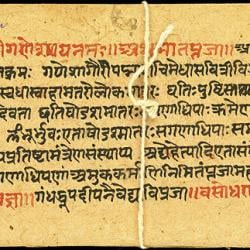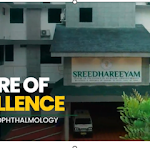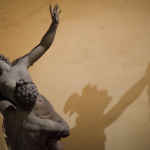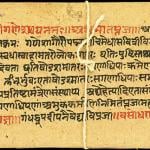It took 400 years for the scientists to conclusively prove the murder.. but the new forensic science has done it. Unfortunately, the murderer is having some fun in his after life! 🙂

Italian scientists believe they have uncovered a 400-year-old murder. Historians have long suspected that Francesco de’ Medici, Grand Duke of Tuscany, and his second wife Bianca Cappello did not die of malaria but were poisoned — probably by Francesco’s brother, Cardinal Ferdinando de’ Medici, who was vying for the title.
Undated photo released Wednesday Jan. 3, 2007 by Prof. Donatella Lippi of the University of Florence, shows materials, viscera (remains of human liver) and two crucifixes, found in the Santa Maria Bonistallo church crypt, in Poggio a Caiano near Florence, central Italy. Scientists in Italy believe they have uncovered a 400-year-old murder. Historians have long suspected that Francesco de’ Medici, Grand Duke of Tuscany, and his second wife Bianca Cappello did not die of malaria but were poisoned _ probably by Francesco’s brother, Cardinal Ferdinando de’ Medici, who was vying for the title _ but that theory was never proven. Now, forensic and toxicology experts at the University of Florence believe they have found evidence of murder, according to their study, which was published in the British Medical Journal on Dec. 21. (AP Photo/University of Florence, HO)
Now, forensic and toxicology experts at the University of Florence report evidence of arsenic poisoning in a new study published in the British Medical Journal.
As rulers, art connoisseurs and financiers of kings, the Medici family flourished for centuries in the rough and tumble alliances of old Europe, providing four popes and ruling first Florence then Tuscany from about 1430 to 1737.
Its most famous members include Lorenzo de’ Medici, or Lorenzo the Magnificent, who supported Michelangelo, Leonardo da Vinci and Sandro Botticelli. At least two Medici women — Catherine and Maria, who was Francesco’s daughter — married kings of France, and the Medicis’ former home, Pitti Palace, now houses an important art gallery.
Among nobles, deaths by poisoning were common, and deadly concoctions of the day had such deceptively pretty names as “Secreta Secretissima,” and “La Cantrella.”
“When a Medici dies, the first assumption is arsenic,” said Richard J. Hamilton, a medical toxicologist at Drexel University who was not involved in the study.
Francesco de’ Medici ruled from 1574 until his death at age 46 on Oct. 17, 1587, 11 days after he fell ill and a few hours before his wife, who by all accounts had been his mistress while he was married to his first wife — who is also believed to have died of poisoning.
“Immediately after their deaths, rumors began to circulate that they had been poisoned,” Donatella Lippi, a professor of history of medicine and a co-author of the study, told The Associated Press. It “was a lethal dose, but progressive, and the symptoms were compatible with arsenic poisoning.”
From the outset, Ferdinando de’ Medici’s behavior was suspicious and fueled rumors, the study says. Among other things, he took charge of his brother’s illness, compiling medical bulletins and minimizing the gravity of his brother’s condition in dispatches to the Vatican.
After the deaths, he ordered immediate autopsies — an unusual step, apparently taken to protect himself from future accusations.
More importantly, the symptoms reported by doctors treating Francesco — nausea, violent vomiting, cold sweats, gastric burning — were typical of arsenic poisoning and not of malaria, the study says.














